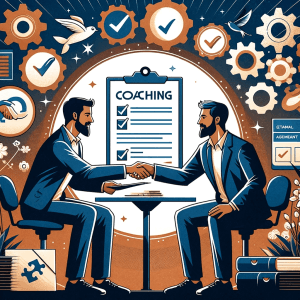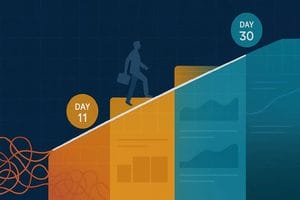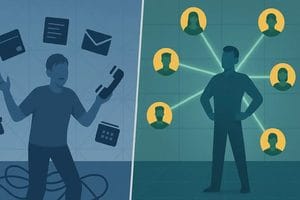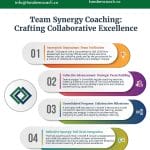Ever wonder how to develop influential leaders within your organization? This guide will walk you through ten impactful leadership development activities that can enhance skills and effectiveness across various roles.
Leadership development is all about equipping leaders with the tools and experiences they need to excel. From role-playing scenarios to outdoor adventures, we’ll delve into activities that build leadership skills, strengthen team cohesion, and drive organizational success.
TL;DR – Ten Leadership Development Activities
Here’s a quick overview of the ten leadership development activities we’ll be discussing:
- Your favorite manager
- Leadership shadowing
- Minefield
- Escape room challenges
- Outdoor adventures
- Improv sessions
- Leadership incubator
- Center stage
- Online escape rooms
- Explore your values
We’ll go into more detail on each of these activities in the below article.
Are you ready to develop your leadership team? Reach out to us so we can unify and elevate your leadership team’s performance with better synergy, adaptability and agility.
What is a Leadership Activity?
A leadership activity is an exercise or task designed to develop and enhance leadership skills. These activities help your team members practice and refine their abilities in decision-making, communication, team management, and strategic thinking. They prepare them to step up to the next level when the time comes.
According to a recent study, nearly half (49%) of companies utilize leadership development programs to upskill or cross-skill their leaders, fostering accelerated growth and development. 31% of companies implement these programs to identify potential leaders, and 20% use them to establish a robust succession pipeline. No matter your reasons, we have got you covered with this article – there are suitable activities for everyone.
Types of Leadership Activities
There are many different types of leadership activities. Let’s have a closer look at five of them:
1. Team Building Activities
Team-building activities are designed to foster collaboration and trust among team members. They can range from simple icebreakers to complex problem-solving tasks. By working together on these activities, team members learn to rely on each other’s strengths, communicate effectively, and build a sense of camaraderie. Examples include group challenges like escape rooms, team sports, and collaborative projects.
2. Experiential Learning
Experiential learning is another useful leadership development tool that involves hands-on activities that simulate real-life scenarios. This method allows leaders to practice and develop their skills in a controlled environment. Activities like role-playing, simulations, and on-the-job training provide practical experience and immediate feedback. These exercises help leaders learn by doing, which can lead to deeper understanding and long-term retention of skills.
3. Mentorship Programs
Mentorship programs pair less experienced leaders with seasoned professionals who provide guidance, support, and advice. Through regular meetings and discussions, mentors help mentees navigate challenges, develop their skills, and advance their careers.
Since 75% of leadership development professionals believe that less than 5 out of 10 topics they train on are directly relevant to the leaders’ job, mentorship can provide a great reality check, where an experienced professional will ensure that the topics you discuss together are applicable.
This relationship fosters personal and professional growth, offering insights that books and courses alone cannot provide. Mentorship can be formal, with structured programs, or informal, based on personal connections and mutual interests.
4. Workshops and Seminars
Workshops and seminars offer formal training sessions focused on specific leadership skills and knowledge areas. Experts typically lead these events and provide opportunities for interactive learning, discussions, and networking. Participants can gain new perspectives, learn best practices, and apply new techniques in their leadership roles. Topics might include communication strategies, conflict resolution, and strategic planning.
5. Virtual Activities
Virtual activities are online exercises designed to engage remote teams. These activities help maintain team cohesion and develop leadership skills even when team members are not physically together. Virtual team-building exercises can include online games, virtual escape rooms, and collaborative projects using digital tools. These activities ensure that remote leaders and teams continue to build relationships, trust, and effective communication skills.
Elements of a Good Leadership Activity
Effective leadership activities require you to plan and design them carefully to ensure they achieve desired outcomes. These activities should engage participants and provide relevant learning experiences they can apply in real-world scenarios. Here are some key elements of a good leadership activity:
- Clear Objectives: Set specific goals for your leaders’ skill development.
- Engagement: Keep events interactive and participatory.
- Relevance: Make sure the learning gained is applicable to real-world situations.
- Feedback: Provide constructive critiques and insights.
- Follow-Up: Offer opportunities for reflection and continued learning.
By incorporating these elements, you can create impactful leadership activities that promote growth and development among participants, leading to more effective leadership within your organization.
Are you ready to develop your leadership team? Reach out to us so we can co-create an effective plan to prepare your leadership team for their next chapters.
Most Effective Leadership Development Activities
Activities for leadership development should be part of a greater succession planning effort that ensures you always have influential leaders within your organization. The following activities are designed to enhance various skills, such as decision-making, teamwork, problem-solving, and creativity. Here’s a detailed look at ten engaging and effective leadership development activities:
Leadership Development Activities for Employees
Try the following activities to prepare your employees to step up and increase their responsibilities:
- Your Favorite Manager is an activity in which your team members reflect on their experiences with different managers, identifying behaviors they admire or dislike. They then simulate workplace challenges and how this manager would respond to each of them. This hands-on approach helps your team members understand the complexities of leadership roles and prepares them for real-life situations. By engaging in these scenarios, your employees can better understand effective leadership traits, enhance their communication abilities, and build confidence in developing their own leadership skills.
- Leadership Shadowing means following and observing senior leaders in their daily interactions. This activity allows your team members to learn directly from experienced leaders, understand their decision-making processes, and witness how they handle various challenges firsthand. Shadowing helps them to gain insights into effective leadership styles, strategic thinking, and the importance of leading by example. It’s helpful to do this within your own organization so that they learn about your leadership culture simultaneously.
Team Building Activities for Leadership Skills
Here are some fun activities to bring your team members closer together:
- Minefield is played in pairs. One team member is blindfolded while the other gives verbal instructions to navigate a “minefield” of obstacles. This builds trust and enhances communication skills among team members. By relying on teammates to guide them, participants learn to trust and support each other. This will pay off in their work environment, especially when working together under pressure.
- Escape Room Challenges are interactive and engaging activities requiring your team members to solve puzzles and escape from a locked room. These challenges enhance problem-solving skills, improve collaboration, and awaken a sense of unity among your team members. They learn the importance of clear communication, strategic thinking, and leveraging each team member’s strengths to achieve common goals.
Fun Activities for Leadership Team
Give your leadership team a change of scenery. Let them develop their skill while getting to know each other better:
- Outdoor Adventures, such as hiking or ropes courses, provide a fun and challenging environment for your leadership team to come together in a different context. These activities encourage leaders to step out of their comfort zones, rely on each other, and develop resilience. The shared experiences and challenges faced during outdoor adventures strengthen team bonds and bring your leadership team closer together.
- Improv Sessions are creative exercises that encourage quick thinking and adaptability. Your leaders engage in spontaneous performances without scripts, which helps improve their ability to think on their feet and respond to unexpected situations. Improv sessions also improve communication skills, boost creativity, and create a positive and dynamic team environment.
Experiential Learning Activities for Leadership
Here are a couple of activities that engage leaders in hands-on learning:
- Leadership Incubator is a structured program that exposes potential leaders in your organization to real leadership tasks while providing coaching and training over an extended period. Analyzing real business cases allows those leaders to practice decision-making in a simulated environment. By examining complex scenarios, discussing potential solutions, and evaluating outcomes, your leaders develop critical thinking and strategic planning skills and grow on the job.
- Center Stage allows team members to role-play different leadership styles in response to a scenario involving an underperforming employee. These simulations use software or live scenarios to replicate leadership challenges. Participants can experience the pressures and complexities of leading a team or organization, make decisions, and observe the results in real time, seeing how successful each leadership style is when put to the test. Center Stage is a great activity to hone leadership skills, understand the impact of decisions, and learn from both successes and mistakes in a risk-free setting.
Virtual Team Building Activities for Leadership
With a hybrid or remote team, ensuring they have opportunities to build rapport is even more important. Here are some activities that bring teams together while also improving their leadership skills:
- Virtual Coffee Breaks are informal chats that allow team members to connect and build relationships in a relaxed setting. These sessions help break down barriers, encourage open communication, and create a sense of camaraderie with your remote team members. Virtual coffee breaks are simple and effective at strengthening team dynamics and promoting a positive team culture.
- Explore Your Values helps team members to become more aligned with your culture. Employees list their core values and prioritize them through a timed elimination process. They then explore how they align with your organization’s core values. This activity creates more self-awareness and ensures they understand their guiding principles and align with your organizational culture. Your team members also get to know each other better, which is especially useful when you have a hybrid or remote team.
Leadership development exercises and activities continuously nurture effective leaders and build strong teams. By engaging in a variety of activities, your leaders can keep enhancing their skills, strengthen collaboration, and drive organizational success.
By incorporating these activities into your leadership development programs, you can create a dynamic and engaging learning environment that prepares your leaders at all levels for the challenges of today and tomorrow.
Are you ready to develop your leadership team? Reach out to us today.
Frequently Asked Questions (FAQs)
Here are some questions we often get about leadership development activities:
What is an Action Plan for Leadership Development?
An action plan for leadership development is a strategic framework designed to enhance leadership capabilities through clear, structured steps. It typically includes specific goals tailored to the leader’s development needs, detailed actions required to achieve these goals, and timelines to ensure progress is tracked and measurable.
This plan may incorporate various activities such as workshops, mentoring sessions, and real-world leadership exercises. Regular reviews and adjustments ensure that the plan remains aligned with both the leader’s growth and the organization’s evolving objectives.
What are Leadership Role Activities?
Leadership role activities are designed to build and refine leadership skills through practical, hands-on experiences. These tasks are often assigned within real or simulated environments to allow leaders to practice decision-making, problem-solving, and team management.
Examples include leading project teams, managing departmental initiatives, or participating in leadership simulations and role-playing exercises. These activities are structured to challenge your leaders, encouraging them to apply theoretical knowledge in practical settings so they can enhance their leadership abilities through direct experience.
What is the 30 Seconds Left Activity?
The 30 Seconds Left Activity is a time-pressured exercise in which participants must make a quick decision, present an idea, or tell a story in just 30 seconds. It promotes quick thinking, decisiveness, and concise communication.
Conclusion
Leadership development is more than just acquiring skills—it’s about creating well-rounded leaders who can inspire and lead their teams effectively. This guide highlighted various activities, from team-building exercises like Minefield and escape room challenges to experiential learning through role-play and simulation.
By integrating these activities, you enhance individual leadership capabilities and promote collaboration, innovation, and growth within your organization. Tailoring these activities to fit your team’s needs will ensure you cultivate leaders who can drive your organization forward.
Is leadership team development high on your agenda? Reach out to us and we can work on this priority together.


















